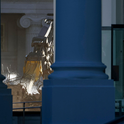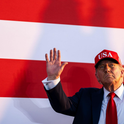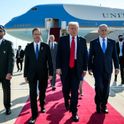President-Elect Donald Trump was fuming about NATO, the North Atlantic Treaty Organisation, long before his shock election win. Never one to shy away from controversy, he declared on the campaign trail that only nations who “pay their bills” would receive US backing. This is not without precedent—last March, President Obama complained about other countries being “free riders.”
By regulation any member of the alliance must commit at least 2 per cent of its GDP to defence spending. Out of the 28 nations, a mere five meet this figure. Surprisingly, they do not include European heavyweights France, Germany and Italy, nor Canada. Only the United States, Estonia, Greece, Poland and the United Kingdom meet their obligations. Following Trump’s victory, Prime Minister Theresa May has pushed for NATO members to meet the requirement amid fears that the incoming president will withdraw American support.
Yet there seems to be little clarity over how the 2 per cent should be reached. NATO’s regulations on this appear very flexible. A closer look at the defence budgets of the UK and Greece reveal the loopholes.
Ahead of the 2015 budget, many observers thought that in a period of austerity, David Cameron’s government would take the axe to defence. But Cameron and then Chancellor George Osborne delivered—sort of. In 2015 the UK’s defence budget was £34.3bn and due to rise to £35.1bn in the following fiscal year, which would have fallen just shy of the mark, at 1.97 per cent of GDP.
But Osborne added new elements to push it over the threshold. To do this, he included items such as retired Ministry of Defence (MoD) civilian pensions (£200m) and UN Peacekeeping Missions (£400m) as well as some of the MoD’s income (which totals £1.4bn), boosting the budget by a further £2.2bn.
This would be supplemented by a new Conflict, Stability and Security Fund, totalling £1.5bn, which would be shared between the MoD, Foreign Office and the Department for International Development. While narrowly edging over 2 per cent last year, the 2016 budget saw no further injection of funds for defence. The new Chancellor, Philip Hammond, simply neglected defence spending in his first budget.
Outside of North America, the country with the largest proportion of its GDP dedicated to defence spending is Greece (2.38 per cent). The Hellenic Armed Forces has 113,000 active personnel, a modest size for a country of 11m people. However, personnel expenditure, including wages and pensions, consumes 69 per cent of the total defence budget. This implies that either Greek service personnel are paid handsomely, or more likely that the country finances civilian employees, such as aid workers dealing with Syrian refugees, through its defence budget.
Ultimately, the UK is committed to being a prominent military power, as its commitment to purchasing 138 F-35B Lightning II aircraft demonstrates. Yet the actions of Osborne—as well as the unbalanced Greek defence budget—demonstrate that keeping to the 2 per cent threshold does not ensure a credible military alliance. If Trump and May manage to push other NATO members into meeting the requirement, expect to see more clever accounting.
Who is really shortchanging Nato?
Even if Trump gets all its members to pay their bills, the alliance may not benefit
January 10, 2017

United States President-elect Donald Trump is seen at a meeting of technology leaders in the Trump Organization conference room at Trump Tower in New York, USA, 14 December 2016. - NO WIRE SERVICE - Photo: Albin Lohr-Jones/Consolidated/dpa












